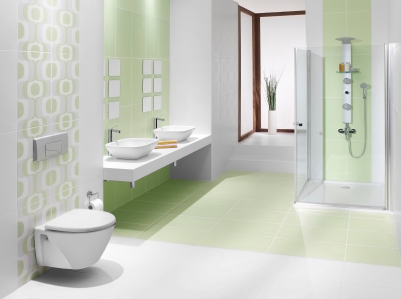Conserving water can be easy and frustrating all at the same time. Just as you’ve solved the problem of H2O havoc in the kitchen, the bathroom faucet starts leaking. Get ahead of these water wasters by soaking up these facts about water conservation.

One less flush could save a lake full of water
The City of San Diego estimates that if everyone in the United States was united in flushing the toilet just one less time each day, we could save a lake measuring four feet deep, a mile long and a mile wide. For the times when flushing is absolutely unavoidable, make a small investment (super small, like under $20) in dual flush converters and toilet tank banks.
Dual flush converters allow the toilet to use a little bit of water for flushing liquids and a little more water for flushing solids. At least 40% of the water typically used for flushing will be saved by using the converters.
Toilet tank banks just hang on the inside of the toilet. That simple, effortless act saves 0.8 gallons of water per flush.
Shutting off water while brushing could save 200 gallons of water
A family of four could save 200 gallons of water weekly by just shutting off the faucet while brushing. Want more savings? Keeping the water off while shaving earns you 100 gallons of water saved each week; doing the same for shampooing and lathering saves over 55 gallons of water. In one week alone, the average family of four could save upwards of 355 gallons of water just by keeping the faucet off.
14% of indoor water waste is due to leaks
One of the least known facts about water conservation is that 14% of the water used indoors is due to leaks. A leaky toilet could bloat your water bill by 500 gallons each day! The best solution to water leaks is prevention:
- For the toilet: Toilet leak detection tablets are like toilet pills. Just drop them in the toilet and if the water changes color you have a leak.
- For showers: Use teflon tape to secure the shower arm. This will keep it fastened and prevent it from leaking.
Outdoor water usage can contribute to (and even be the main cause of) water waste
Having a beautiful, well-cared for garden and lawn could be expanding your water bill and shrinking your finances. Garden and lawn maintenance accounts for nearly 60% of household water use. Using outdoor conservation tools, such as rain gauges and soil moisture meters help determine how much rain has fallen and how much water your lawn/garden needs. For further control over outdoor water usage, install a low-flow nozzle on the hose. Low-flow nozzles help to limit how much water comes out of the hose but without compromising water pressure.
Showers over 5 minutes long can waste up to 1000 gallons of water
On average, a 5-minute shower uses between 15-25 gallons of water. Up to 30% of that water could be saved by installing a low-flow (or earth) showerhead. Earth showerheads, like low-flow nozzles, restrict how much water is used but are able to keep the same water pressure. Some showerheads even have settings that let you change how much pressure you want to use.
If shorter showers are impossible, consider switching to baths. It takes about 36 gallons of water to fill a bathtub. Once the tub is full, you can stay in there for as long as you like without having to worry about water going down the drain.
These five facts about water conservation are only a drop in the ocean of solutions to save the ever needed H2O, but following these tips will go a long way in reducing water usage inside and outside the home.
